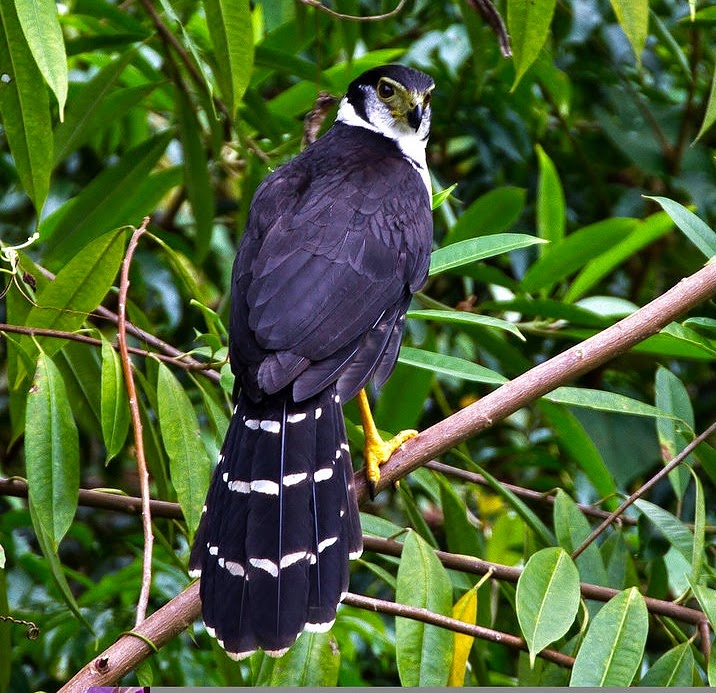 |
| Photo by Michel Giraud-Audine (GEPOG) |
Common name:
collared forest-falcon (en); falcão-relógio (pt); carnifex à collier (fr); halcón-montés collarejo (es); kappenwaldfalke (de)
Taxonomy:
Order Falconiformes
Family Falconidae
Range:
This species is found from Mexico, as far north as Tamaulipas and Nayarit, through Central America and into South America. In South America, they are found west of the Andes as far south as southern Ecuador and, east of the Andes, as far south as southern Brazil, Paraguay, eastern Bolivia and extreme northern Argentina.
Size:
These birds are 46-58 cm long and have a wingspan of 76-94 cm. They weigh 580-820 g, with males being smaller then females.
Habitat:
The collared forest-falcon is mostly found in lowland rainforests, particularly along forest edges, also using dry tropical forests, mangroves and dry tropical scrublands. They occur from sea level up to an altitude of 1.000 m.
Diet:
They feed on mammals, including squirrels, bats and mice, birds up to the size of a guan or ibis, lizards, snakes and large insects. They sometimes follow army ant swarms to capture the invertebrates they flush.
Breeding:
These birds nest in various types of cavities, including natural tree cavities, holes in cliff, caves and in abandoned buildings. The female lays 1-3 white eggs, which she incubates alone for 46-48 days while the male brings her food. The chicks are fed by both parents and fledge 46-50 days after hatching, but continue to receive food from parents for at least 4 more weeks.
Conservation:
IUCN status – LC (Least Concern)
This species has an extremely large breeding range and the global population is estimated at 0,5-5 million individuals. The population is suspected to be in decline owing to ongoing habitat destruction.







